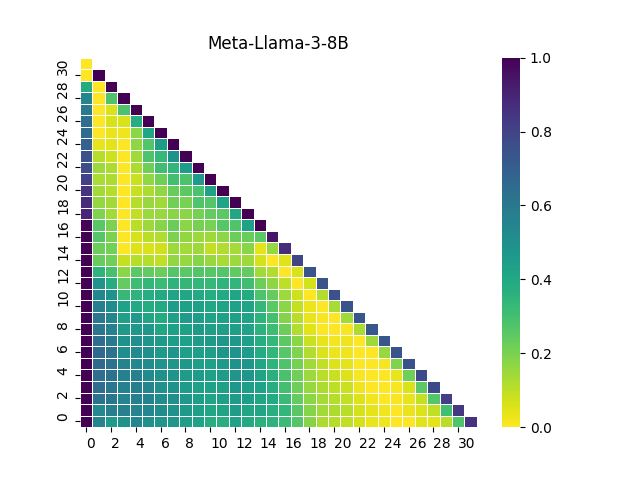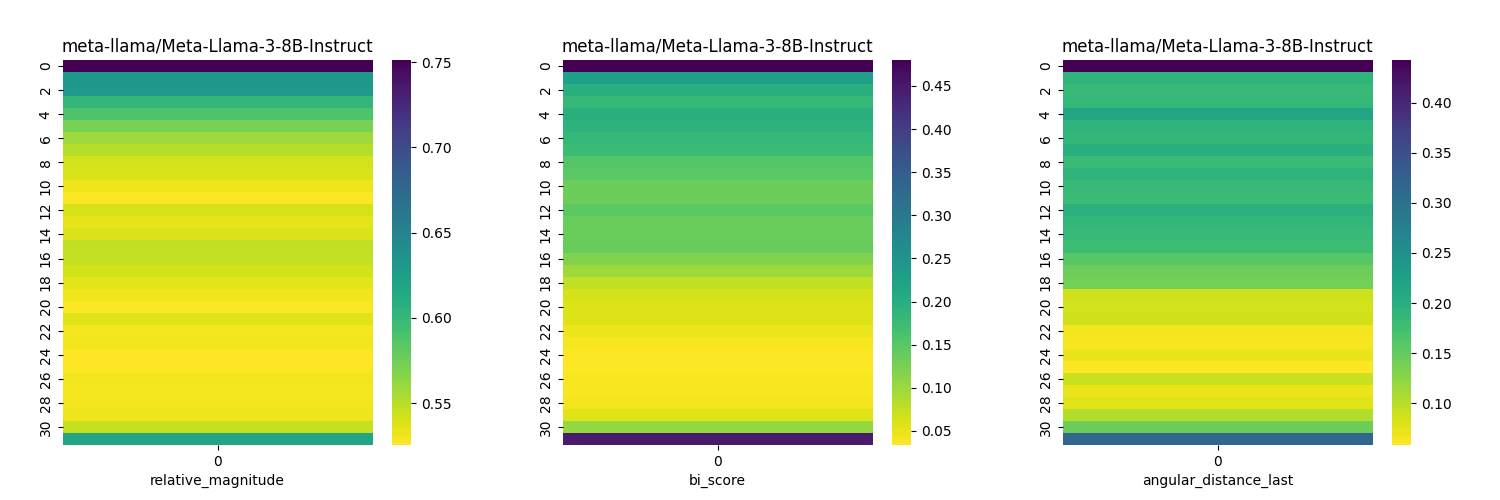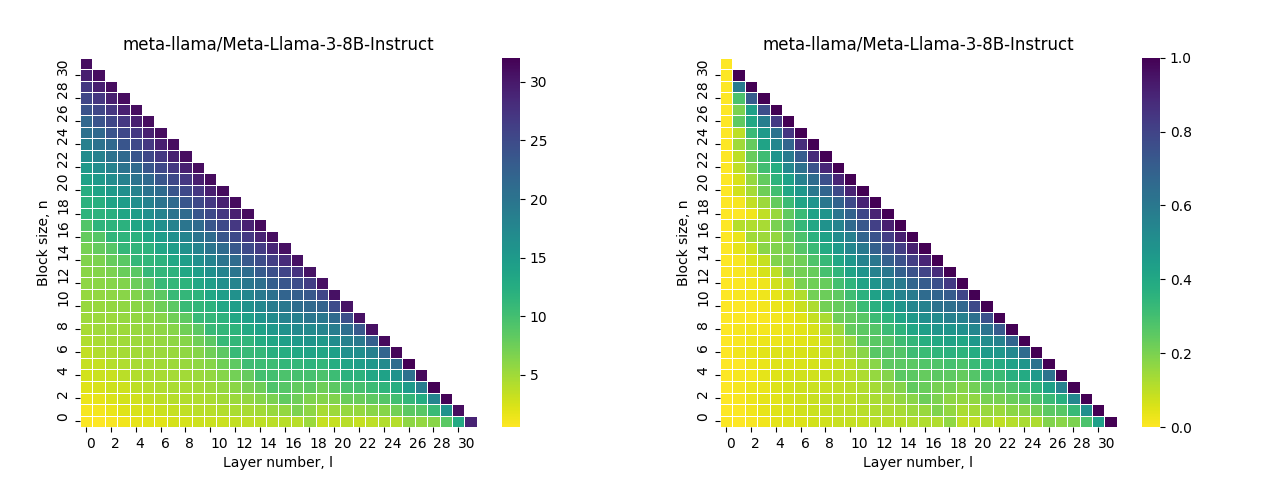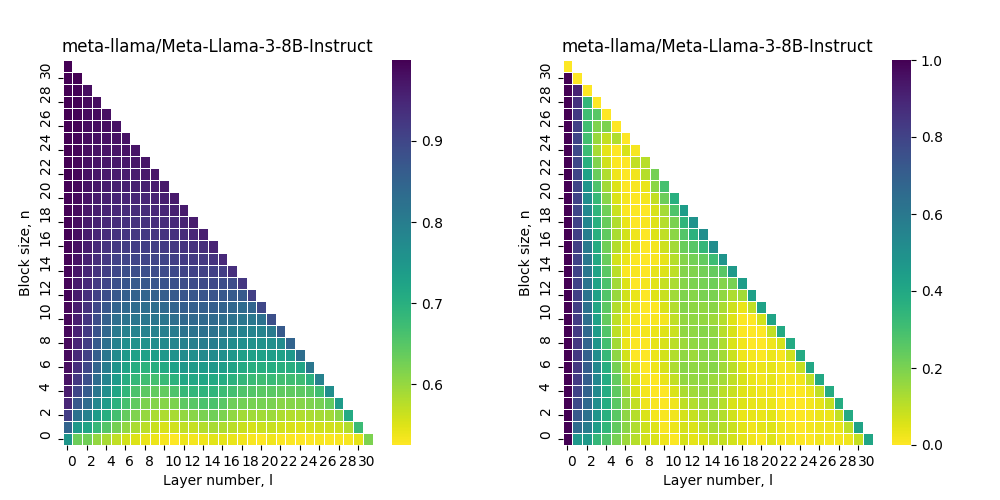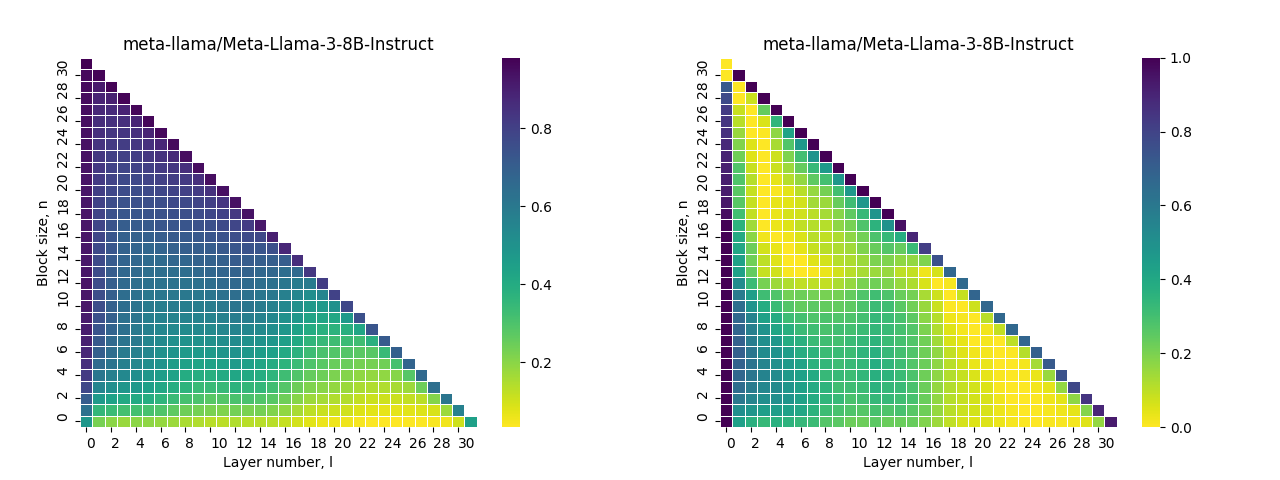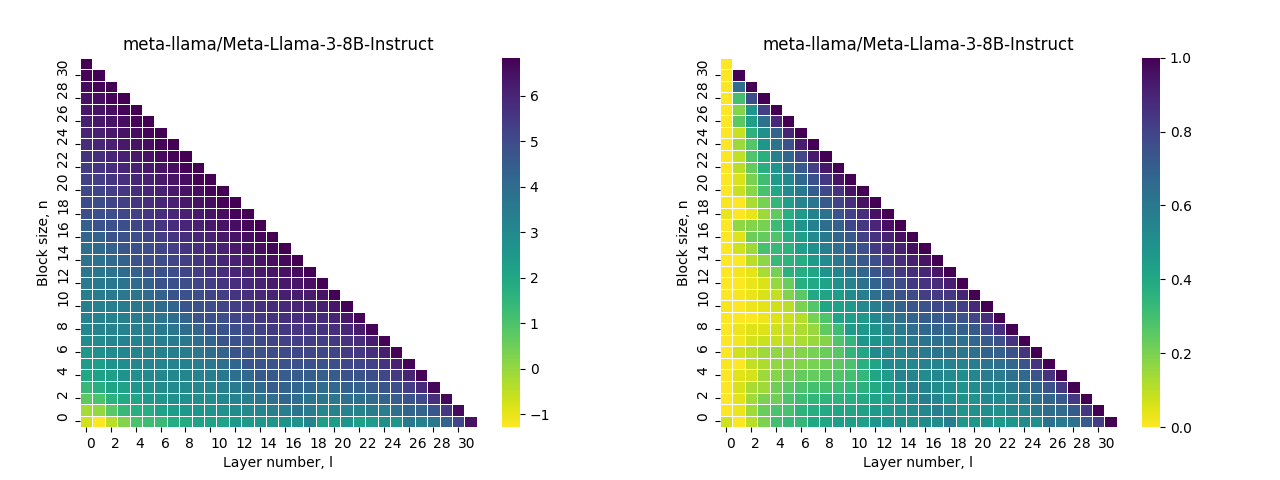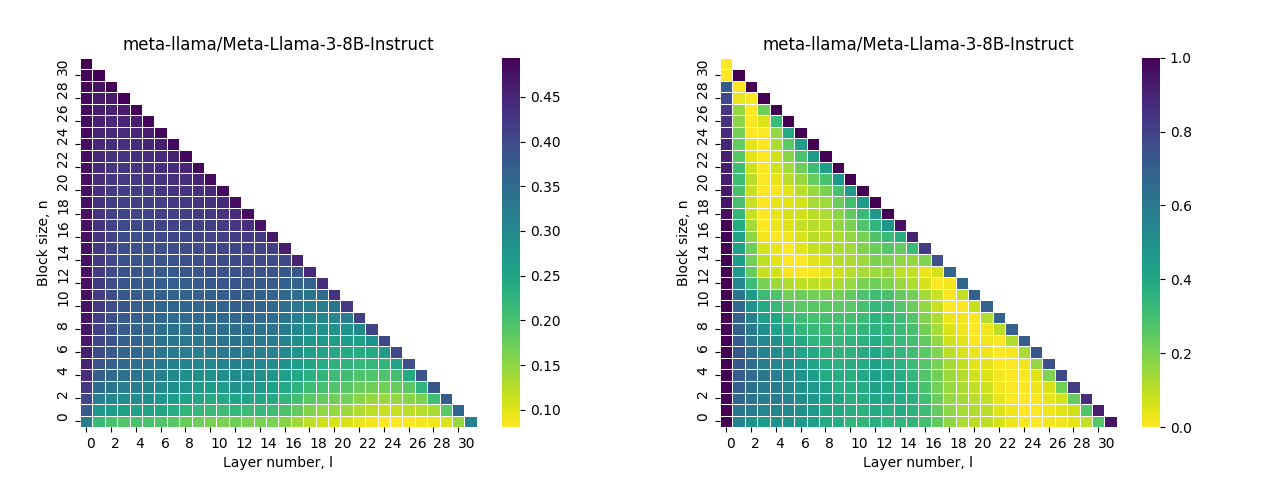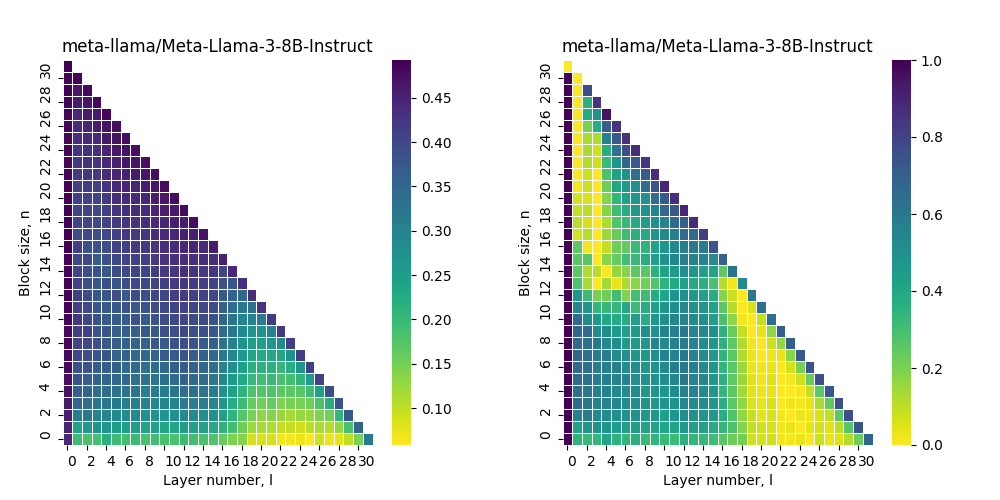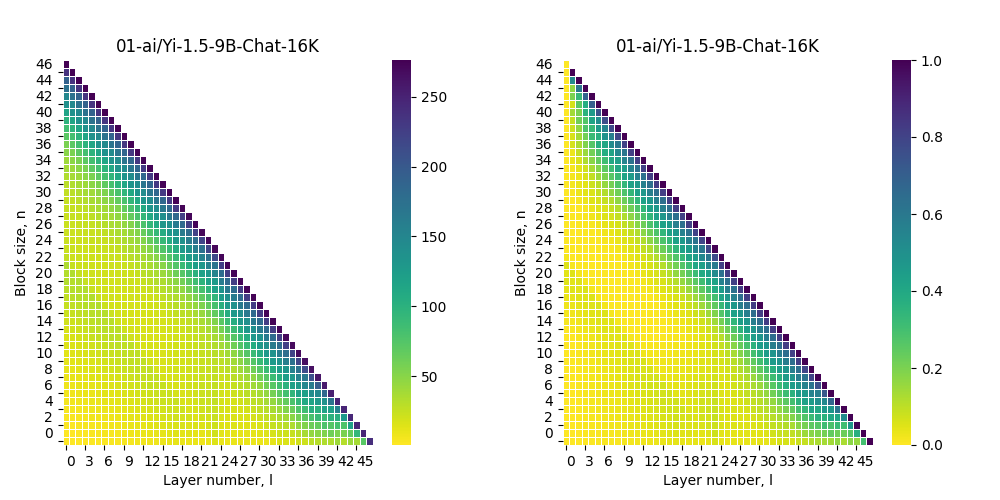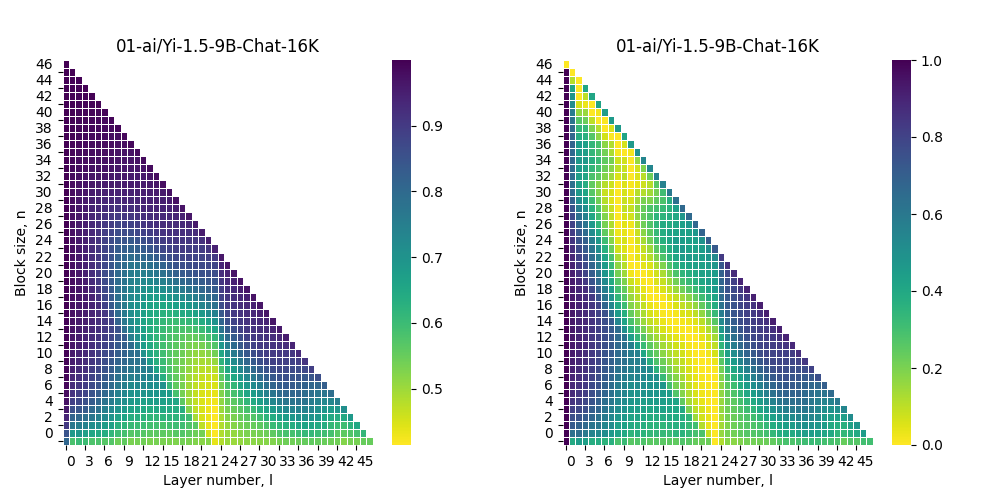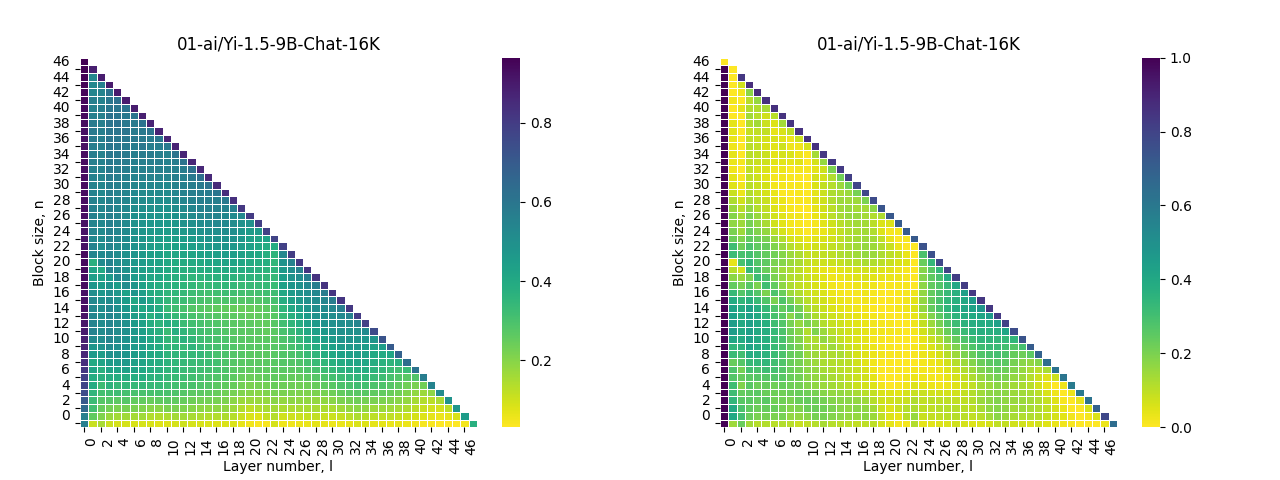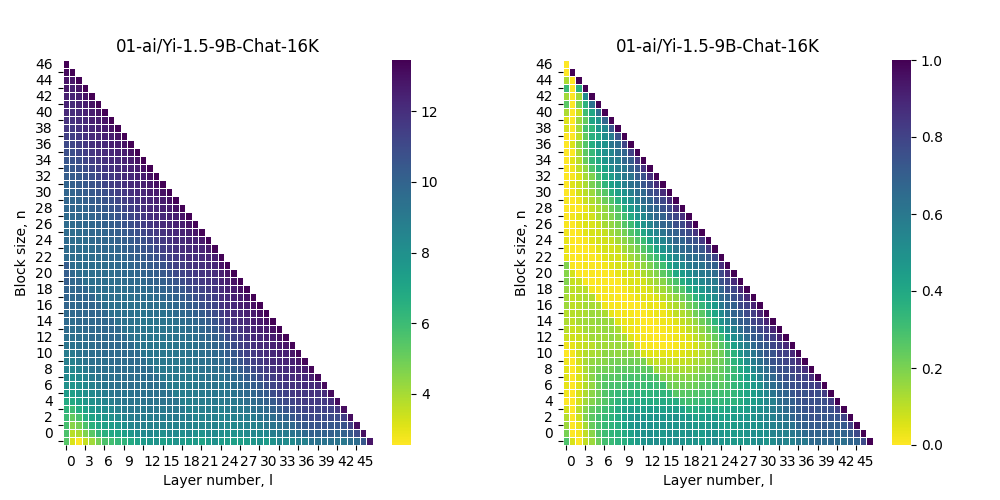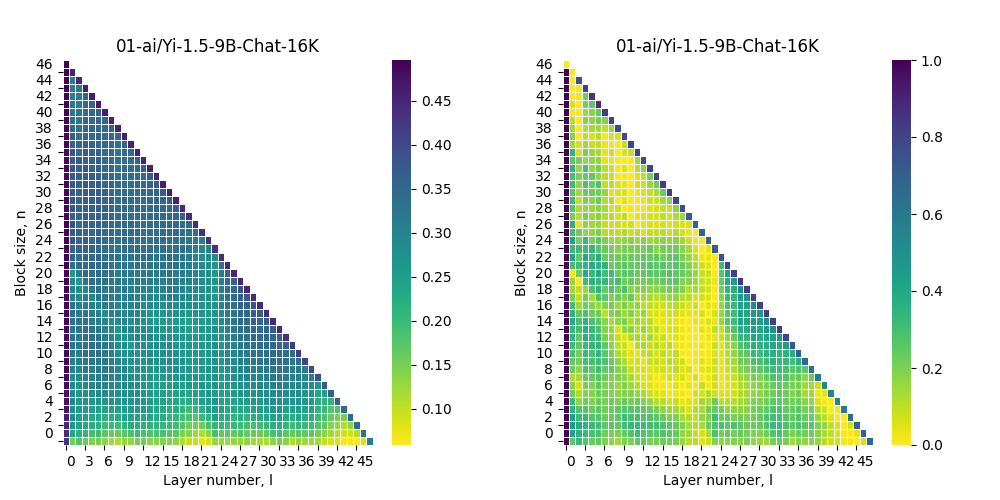-
[Unofficial] Pytorch implementation of layer pruning based on layer importance defined in papers:
-
The repository reproduces and extends original methods by offering more layer pruning criteria.
-
See example outputs at the end of this README 🚀 (Can you guess a recipe for
01-ai/Yi-1.5-9B-Chatfrankenmerge?)
pip install short-transformersRequired additional dependencies: torch, transformers, datasets, accelerate.
from short_transformers import ShortTransformer
from datasets import load_dataset
# load from path/hf_hub
model = ShortTransformer.from_pretrained(model_name)
# or use hf model
# model = ShortTransformer.from_model(hf_model)
# load hf dataset
dataset = load_dataset("allenai/c4", "en", split="validation", streaming=True)
# remove 5 layers, use the dataset to find the least important layers to remove
short_model = model.remove_layers(block_size=5, dataset=dataset, limit=1000)
# continue training to heal after the cut
# ...
# save as hf model
short_model.save_pretrained(output_path)Both short_model and the saved model are fully compatible with transformers. See examples/basic.py for a complete working example.
Pruning can composed step-by-step and customized:
- Analyze model layers:
from datasets import load_dataset
from short_transformers import ShortTransformer
from short_transformers.utils import (
draw_diagram,
get_scored_blocks,
get_best_pruning_start,
)
# load from path/hf_hub
model_name = "meta-llama/Meta-Llama-3-8B"
model = ShortTransformer.from_pretrained(model_name, device_map="auto")
dataset = load_dataset("allenai/c4", "en", split="validation", streaming=True)
# calculate distances between inputs/outputs from/to model layers
# results in a triangular numpy array of shape (layer_count, layer_count)
# results[x, y] - averaged distances for block of size x starting at layer y
results = model.analyse_layers(
dataset=dataset,
tokenizer=tokenizer,
use_chat_template=False,
key="text",
limit=100,
max_length=1000,
)
# draw results
# diagrams style matches the style of original article
# "The Unreasonable Ineffectiveness of the Deeper Layers"
draw_diagram(results, "results.png", title="Meta-Llama-3-8B", normalized=True)Example output:
- Find optimal
block_sizeandstart_layer:
# find optimial block of size 'block_size' to prune
start_layer = get_best_pruning_start(results, block_size=5)
# evaluate all possibe block sizes to prune,
# for each block returns score 0-1
# which is averaged over samples distance between input and output to/from a block
block_score = get_scored_blocks(results, return_md=True, threshold=0.3)Example output:
| Block_size | Removed_layers | Score (avg dist) |
|---|---|---|
| 1 | 25-25 | 0.123 |
| 2 | 24-25 | 0.155 |
| 3 | 25-27 | 0.181 |
| 4 | 24-27 | 0.204 |
| 5 | 23-27 | 0.226 |
| 6 | 22-27 | 0.248 |
| 7 | 22-28 | 0.268 |
| 8 | 20-27 | 0.291 |
- Pruning layers:
# prune 5-layers block
model.prune(start_layer=start_layer, block_size=5)
# save the pruned model
model.save_pretrained("model_output_dir")See example/prune_in_steps.py for a complete working example.
- Changing the pruning method:
Default pruning method is based on angular distance of the last token.
It is possible to overwrite the distance by using model.set_metric(some_callable) before model.analyse_layers().
# ...
from short_transformers.dist import get_angular_distance_ith_token
model_name = "meta-llama/Meta-Llama-3-8B"
model = ShortTransformer.from_pretrained(model_name, device_map="auto")
# choose metric
# calculate distances based on the angular distance of the i=0 token
model.set_metric(get_angular_distance_ith_token(i=0))
# load dataset ...
results = model.analyse_layers(
dataset=dataset,
tokenizer=tokenizer,
key="text",
limit=1,
max_length=1000,
)- bi score (see: ShortGPT: Layers in Large Language Models are More Redundant Than You Expect)
- relative magnitude (see: Weight subcloning: direct initialization of transformers using larger pretrained ones)
- angular distance of the i-th token (see: The Unreasonable Ineffectiveness of the Deeper Layers)
- averaged angular distances of all tokens
- linear approximation of the i-th token (see: Your Transformer is Secretly Linear)
- euclidian dist of the i-th token
Figure 1: Euclidian Dist Last Token. Figure 2: Euclidian Dist Last Token Normalised
Figure 1: Relative Magnitude. Figure 2: Relative Magnitude Normalised
Figure 1: Bi Score. Figure 2: Bi Score Normalised
Figure 1: Linear Approximation Last Token. Figure 2: Linear Approximation Last Token Normalised
Figure 1: Angular Distance All Tokens. Figure 2: Angular Distance All Tokens Normalised
Figure 1: Angular Distance Last Token. Figure 2: Angular Distance Last Token Normalised
Figure 1: Euclidian Dist Last Token. Figure 2: Euclidian Dist Last Token Normalised
Figure 1: Relative Magnitude. Figure 2: Relative Magnitude Normalised
Figure 1: Bi Score. Figure 2: Bi Score Normalised
Figure 1: Linear Approximation Last Token. Figure 2: Linear Approximation Last Token Normalised
Figure 1: Angular Distance Last Token. Figure 2: Angular Distance Last Token Normalised
If you use Short Transformers in your research, please cite with the following BibText
@misc{russak2024shorttransformers,
title = {ShortTransformers, optimal layer pruning tools},
author = {Melisa Russak},
url = {https://github.com/melisa/short-transformers},
year = {2024}
}
@misc{gromov2024unreasonable,
title={The Unreasonable Ineffectiveness of the Deeper Layers},
author={Andrey Gromov and Kushal Tirumala and Hassan Shapourian and Paolo Glorioso and Daniel A. Roberts},
year={2024},
eprint={2403.17887},
archivePrefix={arXiv},
primaryClass={cs.CL}
}
@misc{razzhigaev2024transformer,
title={Your Transformer is Secretly Linear},
author={Anton Razzhigaev and Matvey Mikhalchuk and Elizaveta Goncharova and Nikolai Gerasimenko and Ivan Oseledets and Denis Dimitrov and Andrey Kuznetsov},
year={2024},
eprint={2405.12250},
archivePrefix={arXiv},
primaryClass={cs.LG}
}
@misc{men2024shortgpt,
title={ShortGPT: Layers in Large Language Models are More Redundant Than You Expect},
author={Xin Men and Mingyu Xu and Qingyu Zhang and Bingning Wang and Hongyu Lin and Yaojie Lu and Xianpei Han and Weipeng Chen},
year={2024},
eprint={2403.03853},
archivePrefix={arXiv},
primaryClass={cs.CL}
}
@misc{samragh2023weight,
title={Weight subcloning: direct initialization of transformers using larger pretrained ones},
author={Mohammad Samragh and Mehrdad Farajtabar and Sachin Mehta and Raviteja Vemulapalli and Fartash Faghri and Devang Naik and Oncel Tuzel and Mohammad Rastegari},
year={2023},
eprint={2312.09299},
archivePrefix={arXiv},
primaryClass={cs.LG}
}



